[Note: This is a book review of “The Crystal and the Way of Light” that I posted at Amazon on December 12. In a few weeks, I’ll write and post Part 2, at integralspiritualmeditation.com. It will be a regular article, not a book review.]
There is not a single living Dzoghen master/teacher who really impresses me – but the best of the bunch, IMO, is Namkhai Norbu. I wasn’t looking to read another book by Norbu; I’d already read four (see my five-star review of “The Cycle of Day and Night” and four-star review of “The Supreme Source”), but when I recently read Jackson Peterson’s “The Natural Bliss of Liberation” (see my two-star Amazon review), which conflates the term “kundalini” with the Tibetan term “thigle” (which means “bindu, sphere, bead, drop, essence, sphere of light, spherical drop, spot, dot, droplet, seed-essence”) I was intrigued: I had not encountered this conflation before. I Googled “thigle and kundalini,” and sure enough I was led to excerpts from “The Crystal and the Way of Light” – and so I purchased the book.
The editor of the book writes that it took four years to complete the project of putting this book together and that he continually revised the manuscript before it took its present form. But despite all this effort, the book is just a disorganized jumble of talks intermixed with charts, plates and appendixes – and there are still plenty of sloppy grammatical errors.
Before I get further into the negatives of this book, I’ll talk about its positives. It provides some interesting diagrams and charts detailing the constituent principles of the various groups and divisions of Dzogchen teachings. For example, there are three series of Dzogchen teachings – Semde (Mind), Longde (Space), and Mennagde (Special or Secret Instruction) – and the four “yogas” that enable one to enter into contemplation in each series. I’m very familiar with the three series, but the further breakdown of each of the series into four “yogas” was new to me.
Norbu provides some provocative material correlating the Hindu tantric descriptions of subtle-body anatomy (chakras, nadis, pranas, etc.) with the Tibetan. And he makes some statements that I found interesting (but don’t necessarily agree with). For example, as earlier stated, he conflates “kundalini” and “thigle,” and tells us that this energy is more concentrated in the chakras. But as is typical with Norbu, the depth of his descriptions and analysis leaves much to be desired. For instance, any description of kundalini, in a Dzogchen context, that doesn’t explain its relation to the Sambhogakaya, the Blissing/Blessing Light-Energy Body, is incomplete and lacking – and Norbu’s doesn’t explain this interrelation.
Norbu discourses on the three energies -- Dang, Rolpa, and Tsal – that supposedly, respectively, correlate with the three Kayas: Dang with the Dharmakaya, Rolpa with the Sambhogakya, and Tsal with the Nirmanakaya. But I don’t buy these correlations. Norbu tells us that Dang energy is limitless and formless, but from my perspective, that describes the Sambhogakaya, which, in contrast to him, I don’t view as a “Wealth Body” of subtle, stepped-down, emanated energies. To my mind, the Sambhogakaya is the unborn, unmanifest, ceaseless Blessing/Blissing Clear-Light-Energy of the Dharmakaya, and as such is always outside of space-time.
I have a real problem with “closed-fist” spiritual teachings, so my face puckered into a frown when I read the following from Norbu regarding Thodgal (Togal), the “highest Dzogchen practice,” which follows/complements Tregchod (Treckho) in the Mennagde, the highest Dzogchen series:
“Continuing beyond Tregchod there is the practice of Thodgal, which means ‘surpassing with the sense that ‘as soon as you’re here, you’re there.’ This practice is genuinely secret, and it is not appropriate to give more than the most basic description of it here. This is not the same as an instruction for practice. Thodgal is found only in the Dzogchen teachings. Through the practice of it one is able carry one’s state of being rapidly to the ultimate goal.”
According to Norbu (though he doesn’t elaborate beyond this), “through the development of the Four Lights, the Four Visions, of Thodgal arise, and working with the inseparability of vision and emptiness one proceeds until the realization of the Body of Light is attained.”
I say that Norbu doesn’t fully grokThodgal. “Thodgal” means to “leap over” [to the “Other Side”], which is the Sambhogakaya, the same Light-Energy as the Christian Holy Spirit and Hindu Anugraha Shakti. Upon this direct, immediate connection, which bypasses or supersedes Tregchod (the volitional attempt to “cut through’‘spiritual materialism,’’’ meaning all that obstructs the connection to Spirit, or Sambhogakaya), the mystic merges with and channels this Supernal Influx. The Sambhogakaya is this Body of Light (or Blessing/Blissing Light-Energy).
Over half of this book consists of “magical-mystical” stories narrated by Norbu, and many of them are hard to believe, along the lines of what one finds in Carlos Castaneda’s books about the Brujos/Brujas. But one story is easy to believe, because it illustrates Norbu’s failure to understand Thodgal. Norbu’s master tells him to begin Thodgal practice, and so he does after an amazing dream in which Jigmed Lingpa (the great self-proclaimed reincarnation of Longchen Rabjam), as a young child, meets him in a cave and reads him words about Thodgal.
I say that one cannot just begin practicing Thodgal in the manner described by Norbu. One can only begin to practice it upon Initiation, or Baptism, by the Spirit, or Sambhogakaya, itself.
Norbu describes the Four Visions, of Thodgal thus: “The first of the Four Visions of Thodgal is called the “Vision of Dharmata (or ‘nature of reality’) and the second vision is the further development of the first. The third is the maturation of it, and the fourth is the consummation of existence.”
I’ve long known that mystical Christianity and Dzogchen are virtual mirrors of each other – and I may be the only spiritual teacher who explicaties the correlations between the two mystical traditions, which I’ll now do so regarding theFour Lights/Visions.
I believe that the First Vision correlates with Baptism, the second with Confirmation, the Third with Sancifying Grace, and the fourth with Divine Union/Beatitude. Each of these Visions” is simply the intensification of the descent of the Holy Spirit, or Sambhogakaya (which the great Buddhist scholar Christmas Humphreys defines as “Divine Power”), until consummating Divine Union, or Supreme Beingness, is realized. “Dharmata” is a synonym for Such-ness/Is-Ness/ Being-ness, and the union of the “vine” of one’s soul (or consciousness) with the “vine” of Spirit, or the Sambhokaya’s Clear-Light-Energy, “produces,” or unveils, Di-vine, or Supreme Beingness, the Dharmata. This is coincident with attaining a Light Body, because the Sambhogakaya is the Light Body (or Dimension).
In some Yogacara schemas, the 7th to 10th stages of the 10 stages of a Bodhisattva’s en-Light-enment are simply the progressive intensification of the descent of the Dharmamegha (the Dharma Cloud). The final full descent of the Dharmamegha (or Sambhogakaya) into the Tathagatagarbha (or Sacred Heart-center), yields Bodhicitta, or “Tathata” (Suchness or Beingness, which is the same Divine “Condition” as the Dharmata. My guess is that the Dzogchen tradition simply “borrowed” the final four stages of a Bodhisattva en-Light-enment, and “mystified” it by “packaging” it as “secret Thodgal teachings.”
I’ll be developing/elaborating the correlations between the various schools of Buddhism (and Christianity and Hinduism) further when I get around to writing my books on Buddhism and Dzogchen. Until then, there is Namkhai Norbu, probably the best of the current crop of Dzogchen masters/teachers.
Dzogchen Thodgal (Togal): Namkhai Norbu’s POV Versus Mine
Previous post: Dumbed-Down, Disintegral, Discombobulated Dzogchen
Next post: Cosmic CON-Fusion: The Muddled Mysticism of Mantak Chia
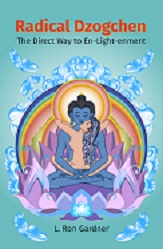
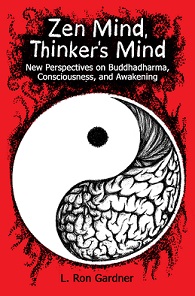
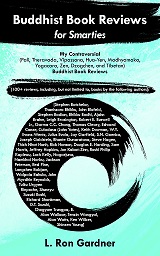
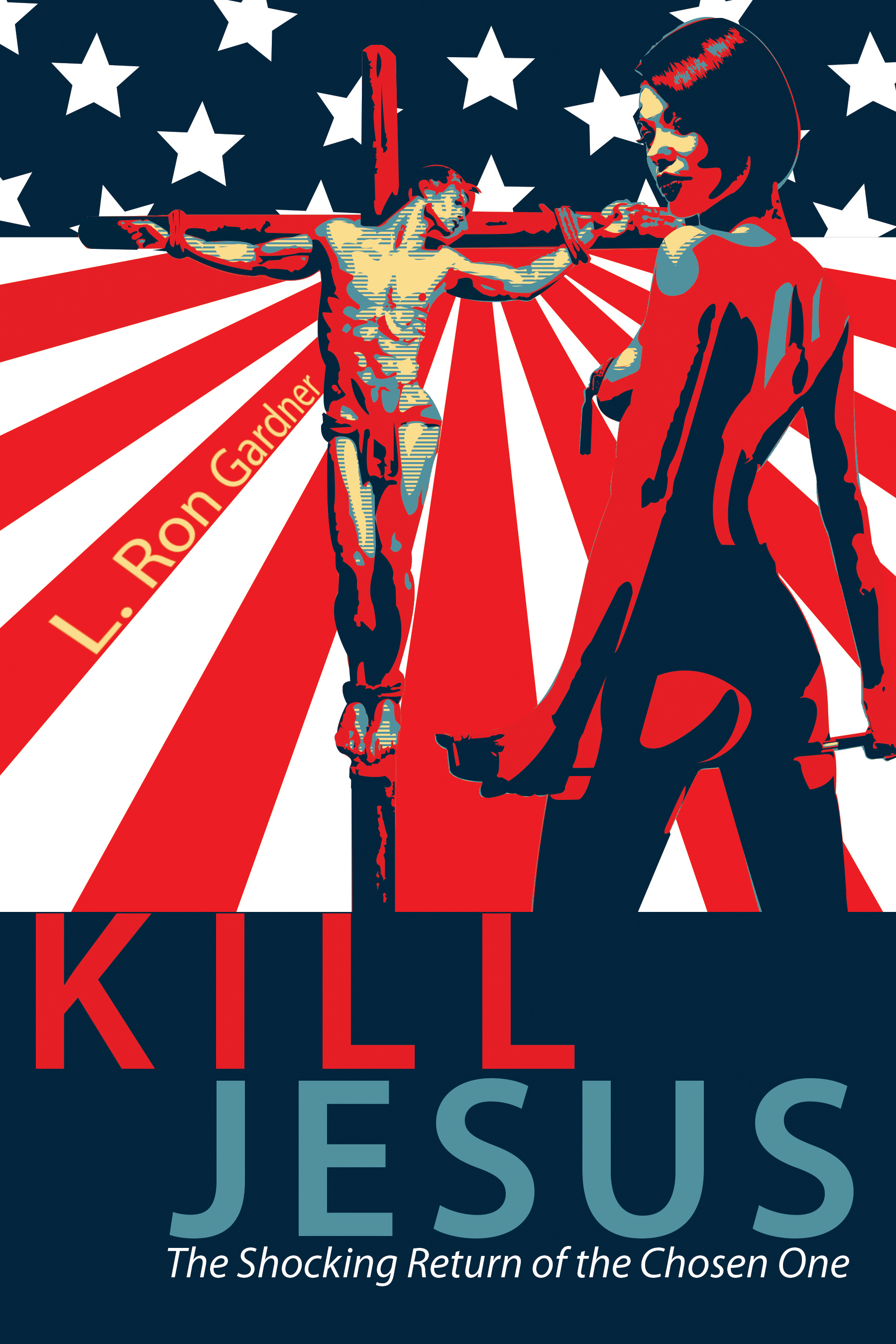
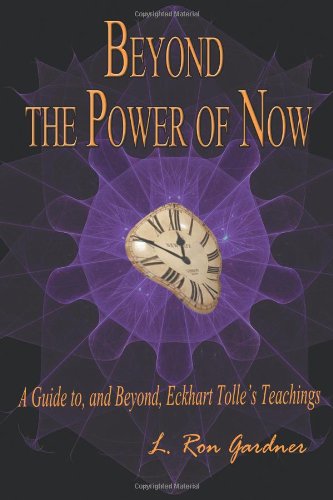
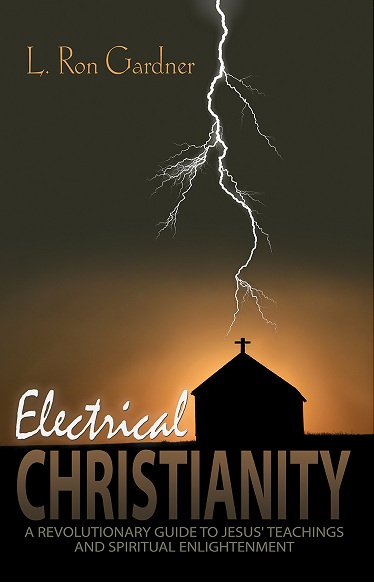
{ 39 comments… read them below or add one }
Hi Mr. Gardner,
I read somewhere once that Thodgal means to “leap-over the forehead”. I think the practice which you teach is closer to Trekchod which has four different “stabilisations”
1: Mountain-like which I think is merely getting past concepts to direct experience, this is the level which all public texts teach at. Just resting non-conceptually.
2: Ocean-like which is what it feels like when you are abiding in the Vajra Waves ie Holy Spirit. You gently rock back and forth and it feels like you are on a boat in the ocean.
3: Rigpa. I can’t say, haven’t gotten this far.
4: Vision. Correlates with Thodgal in some way that’s all I know.
I think Thodgal is a series of shortcuts through “Leaping-Over” the phenomenal visual field to the noumenal visual (indeed omni-sensorial) field (light-being in itself) which is projected through a channel from the Hridam to the eyes.
The four lights are actual lights that one sees just beyond the visual field and can increase the intensity and area of effect of the Vajra Waves or Holy Spirit when “caught/realized” by gazing fixedly at the edge of vision. This is very laborious and thus most people just work on Trekchod.
1: Right side 2: Left side 3:Bottom 4:Top (forehead)
When one finally succeeds in “leaping over the forehead” the Rainbow Body is within reach.
This is just a theory from my experience and research, not an official teaching. Hope it does no harm to share.
Also your frustration with Dzogchen authors is understandable, but they have vows not to reveal certain things publicly such as the Vajra Waves and Thogal and so forth, so you really have to receive the teachings directly. The books are just to spark interest and draw in people for the most part.
Eliot, I have never read any Dzogchen book where Togal is described as to “leap over forehead.” To “leap over” is to immediately (or “spontaneously”) move from Treckho (attempting to “cut through spiritual materialism, one’s mind forms and attachments) to to a direct connection to the “Other Side,” Spirit, or the Sambhogakaya (the Clear-Light continuum). Hence, Togal is often defined as “spontaneous presence.”
The great Dzogchen master Longchen Rabjam described Togal as, “resting in the continuum of the radiance of Awareness. ” That’s exactly what it is, which is tantamount to channeling the Holy Spirit. One channels “Clear-Light” Energy. Since it is “clear” there are no visions to be seen. Whatever is seen is manifestation. The Clear Light itself is Unmanifest. The Clear Light is felt-intuited, nor visually perceived.
The channel between the eyes/crown and Heart-center is called “Kati” in Dzogchen and Amrita (or Atma) Nadi by the Hindus. It is the Samhogakaya, the Blessing/Blissing Clear-Light-Energy-current of the Dharmakaya. The Light has been described as Grace Waves, because Light behaves like waves, and yogis experience this wave-like motion.
I don’t care for “closed fist,” or secret teachings. If you can direct us to books or teachings that elaborate on what you’re saying, please do so.
This is one of the most atrocious examples of misdirection and disinformation I have ever seen
People should never comment on something beyond their understanding in order to prevent giving wrong views which damage themselves as well as their progress
BTW Secret teachings exist because of this type of antics which triggered even more wrong
views – the teachings past Trechod are closely and carefully monitored by the Master simply
because of the nature of the teachings and the individual nature of the student. It is the responsible way to prevent more crap being tossed into the mind-stream
Jom, I look forward to engaging you and others in Dzogchen Dharma battles after I publish my Dzogchen book next year. Meanwhile, I invite anyone and everyone to attempt to deconstruct what I write.
You’ve learned that by espousing your home-spun philosophy vis a vis Ekhart Tolle can increase sales and attention – So now you try with Dzogchen – Attack the tradition and say you “disagree” with its authentic proponents so as to better position yourself for whatever your agenda is.
Doing this with Ekhart Tolle is one thing – He writes from his own experience independent of tradition.
However, to do so with regards to Dzogchen shows everyone with just a bit of ability to read and process for themselves, let alone to anyone serious about practicing the teachings, shows that you clearly have no real knowledge and understanding of your own. Thus, anything you write about Dzogchen will do nothing more than continue to feed this corner of online confusion you’ve worked so hard on.
Ron – Isn’t it much better to get teachings directly from those who have actually been trained in and practiced the authentic teachings, rather than listen to you, or Jackson, or anyone else try to fit Dzogchen into your hodge-podge world spanning Wilbur to Advaita, Ramana Maharishi etc.
The whole point of Dzogchen is that it’s beyond intellectual speculation. It’s something that can only be experienced directly. In order to have that experience and knowledge, you must obtain it from another human being (as it is said that most can’t contact Samboghakaya directly) who has developed that knowledge very precisely. Failing that, you’re simply parroting what others have written, and interjecting your own completely insignificant speculation, based on what is obviously already a completely faulty interpretation.
Isn’t it much better to obtain the teachings from those qualified to teach, rather than learning just a little bit about it, and immediately creating massive confusion and speculation?
It’s so ironic, but this is precisely what Dzogchen is for – cutting through this kind of speculation and experiencing our own nature and qualities directly – To write and argue about the teachings, especially when we haven’t received them properly to begin with simply verifies what the teachings themselves say – That they will be misunderstood by those with ulterior motives and used by them for their own ends. This blocks any chance in this life to ever benefit from these profound teachings so relevant for our times.
This is an inestimable pity as the teachings and the Victorious ones who have realized them are actually (amazingly!) still alive and some are teaching today – although it’s getting harder and harder to find a qualified teacher.
I hope that people everywhere who are sincerely interested will find a real teacher, investigate him/her carefully, as explained in the tantras, and then if there is a connection – learn directly from the source rather than engage in the very kind of speculation and mistaken ideas that Dzogchen so adeptly cuts through when properly applied.
Every tradition can benefit from my unique insights and knowledge, which I plan to apply to one spiritual tradition after another. I’ve already taken on Tolle’s Nowism and Christianity, and Dzogchen will be next. After Dzogchen, I will focus on Pali Buddhism/Mindfulness. Then, I will turn my attention to Sacred Alchemy, Kabbalah, and Hermetics.
I’ve left my body naturally all during my life, several years ago beings began making themselves seen after I was healed. There are witnesses to the things I was doing. Too much to even try to explain in a post. 🙏🙏🙏
Eliot, I do not find your post the least bit confrontational; the last thing I’m interested in is attracting individuals who blindly accept everything I say or write. I like people who question and consider everything. I’m that way myself, and if I wasn’t that way, I never would have figured out how it all comes together spiritually
I appreciate your friendly and open attitude, and I think it adds spice to this site to have people like you posting comments here. I was kicked out of two Dzogchen sites in a matter of a couple of days simply for posting POVs that were unorthodox. I’m glad to say, I’m not like that.
That being said, let me state my POV more bluntly: I don’t think that any of the Tibetans, including Norbu, really understand Dzogchen. The practices you described aren’t true Dzogchen; they are exclusive-reductive tantric-type practices. True Dzogchen deals with Presence (Dharmakaya- Treckho), Power (Sambhogakaya-Togal) and Poverty (Nirmanakaya-self-emptying), and Norbu’s Togal practice (described above) has nothing to do with the Great Perfection.
Regarding the links, I have no interest in buying anything Keith Dowman translates (see my two-star review of “Natural Perfection”). And the other book is $31 for a Kindle edition. What an overpriced joke. If you send me copies of these books, I will happily read and review them.
I will be posting an article — “The Demystification of Dzogchen Togal” — at integralspiritualmeditation.com and at my Facebook page (L Ron Gardner) within a few days, and I look forward to your response to it. Given that I will be posting that article, I won’t get into elaborating my POV on Togal further in this comment.
“That being said, let me state my POV more bluntly: I don’t think that any of the Tibetans, including Norbu, really understand Dzogchen”
You sir are a fool
“That being said, let me state my POV more bluntly: I don’t think that any of the Tibetans, including Norbu, really understand Dzogchen.”
Astoundingly arrogant and uninformed. Your words completely illustrate your lack of understanding, let alone knowledge or experience.
Hi,
Just dropped on this interesting article, two things came to me :
1- there is a lot of focus here on very analytic and conceptual elaboration on thodgal, I think it’s really not good to go so far in such analytics. I honestly not at all convinced that this will help in any way praticionners in any constructive way. I just don’t see the point…
2- Namkhai Norbu is a realized master, he doesn’t write book to convince an describe analytically reality, analyse it and make conceptual sense out of it. He writes them because his great wisdom shows him that this will be the way to bring more students to the ultimate realisation (in this case). When I read the texts of this subject, I see clearly stains of conceptualisations, and I’m not convinced at all.
On this, all this information is very interesting, although I really don’t see on a practical level how this could help someone progress on the path, “knowing” as nothing to do at this level. Or very very little usage… Experience and instructions are.
All the best to you both,
Cheers
Louis
Louis, I don’t at all agree with your POV. I don’t think Norbu is Self-realized, and I will continue to deconstruct his teachings, which I believe serves a positive, rather than a negative, function.
Overall, I don’t find this article illuminating or impressive, likewise with Ron’s comments following. A lot of perennial claims which he just blindly asserts and fails to rationally justify or demonstrate, and a lot of far reaching claims about Dzogchen and redefinitions which he fails to justify historically or doctrinally. Lastly, certain historical claims which no academic Buddhologist would agree with as there is no evidence for nor reason to think they are have any merit, yet he just blindly asserts them as if blind assertions hold weight of some kind.
It seems quite clear he doesn’t know Tibetan very well, because he is using secondary off-hand attempts at translations to muddle to the discussion, and all in all has given no reason for anyone to remotely suspect that he understands Dzogchen at all. You might understand something, but calling it Dzogchen seems wholly unjustified.
It appears there is some arrogance to this man, and based on his apparent inability to actually argue his positions, or make clear his unfounded conjecture as distinct from fact, it isn’t surprising he has been banned from forums, as he attempts to write with an air of authority (even smug authority), but fails to live up to that insofar as the actual content he presents.
1/10, would be funny as a “troll” and nothing more; not even provocative questions.
efn, I stand by my article, and welcome anyone to argue that true Togal is anything other than conducting Clear-Light Energy, or the Holy Spirit.
I have left my body naturally all during my life, have been pulled out of body 9 times after a prayer for help and was healed. Lemme know if I can help. 🙏🙏🙏
Dear L. Ron Gardener – It seems all paths are the one path in the highest teachings of any traditions that end with this similar result of dissolving the notion of a self entity or a conceptual self, but I agree that N. Norbu is not a living Buddha as of the moment, or is he? More about that later. First of all the name of Jackson Peterson’s book is “The Natural Bliss of Being” unless he has a few titles for the same book…I am closely following his work with a fairly open minded enthusiasm and skeptical attention. Anyone who proclaims to have reached a state of no ego is likely still working with one in my humble opinion. I practice Togal as a result of a series of events that led me to the texts and teachings of that so called practice…I don’t know the technical names for every practice and I find it all quite fascinating and irrelevant in the end. But it is necessary to communicate it. Togal is not a visualization and it is not something we can conduct as clear light energy…I’m unsure what you mean by that statement and I’d like to hear more. Norbu has never been clear to me in all the retreats I’ve done at his Tsegyelgar in Conway, MA. What is being pointed to is often something that can’t be conveyed anyway. I spent the weekend with the Bon tradition’s world leader Gwalya Menri Trizin the 33rd Abbott of the Menri Monastery which is the home of the living Bon Tradition. He taught Ah Tri Dzogchen for the weekend in New Jersey. It was very clearly translated text and his own words on Dzogchen and what I realized is no one could really follow it. It was so complex and difficult to comprehend from the mind perspective, that it will only make sense to those who are ripened and ready for that truth to appear to them. Call it magical thinking etc….but it seems we are trying to grasp something with the mind that is ungraspable. It can’t be conceptually understood. Togal shows the phenomenon of thigles that exist in the eye where Dzogchen claims that we need to be stable. The eye being stable will stabilize the mind. The visions are empty appearances and not so relevant as to the state of one’s mind as a result of the eyes becoming stable. The jump over is just a title. Irrelevant. It’s like the naming of the Thigles, which is just a way to point to the phenomenon we experience in common. It seems the jumping over is reference to the most direct kind of cutting through the samsaric mind. It deals with the light body surely and that body is relative to the solidity of the conceptual mind. In stabilizing the eyes one can experience a natural dissolving of any self entity or conceptual identity as a result and the light body is naturally purified of whatever obscurations have continually reified the notion of someone existing here or there…So maybe the jumping over relates to that cutting through to the body of light through any obscured selfing that happens…Unsure as of this moment, but it would seem that this type of answer comes naturally to those that sustain the mind of clear light by no effort of their own…Anyway Thanks for the article and your point of view…
Right the story of Namkai Norbu that I wanted to further comment on was that I met him and shook his hand and I have studied with a student of his. I have also read his books and have attended his retreats and never really took in much of what he was saying due to the language barriers I experienced. Also at the time I couldn’t comprehend it anyway. What I believe now is there is no way to conceptually get this stuff. We type words and talk about it all but we are wasting time because it is that very thing that we cannot describe that we are trying to point to. So Norbu may very well be at a point of dissolving his light body from what he understands…I’d say it would take time to know the truth for oneself of these types of things…How would we comprehend it until we experience it for ourselves? It cannot be conveyed through words. In a sense we are all expressions of “it” already and we have no where we need to reach to experience “it….” So maybe in a sense he is an enlightened being who is getting very close to experiencing the essence of these teaching for himself. It’s worth contemplating…
Stunned by the superficiality, arrogance, and confusion of this post. Having spent the past 20 years studying and practicing with numerous authentic Dzogchen Masters, including Namkhai Norbu Rinpoche, I can promise anyone who reads these pontifications that they are as far from the actual practices and experiences of Trekcho and Togal. This reads like a five year old in kindergarten struggling to understand Doctoral level Astrophysics, which is not to say that Dzogchen is something complicated, but only to point out that the individual writing this is just embarrassingly way out of his depth, and he is obviously not mature or humble enough to appreciate this.
Having spent the past 20 years studying and practicing with numerous authentic Dzogchen Masters, surely the direct path has brought you close to enlightenment. Interestingly, your criticism expressed here contains no actual experiential data aka insight. Your whole “argument” is based on logical fallacies. Why should anyone take you seriously?
I can’t find any Dzogchen masters that impress me. I challenge you to move beyond deconstruct ad hominem, and deconstruct anything anything I’ve written in my book “Radical Dzogchen.” I say I’m the only one who properly explains the Trikaya and Rigpa/Trekcho/Togal.
youre a funny guy, ron.
Very true. I’m your typical Jewish comedian–but my assessment of Norbu is not intended to be funny, just enlightening.
Dear Ron
Norbu was a beautiful, warm and powerful man and to celebrate life with him during retreats and ceremonies was amongst the best experiences of my life. Teachings, practice and analysis have come and gone in my life but the transmission of loving presence will always remain.
My favourite ‘teaching’ of his was the simple advice to just relax; and while I may never fully realise that teaching, it does become clearer with time; or perhaps I am just getting old.
Kind regards
Dan
I find it quite sad that you had a chance to learn from a highly regarded Dzogchen master and the thing you appreciate the most is a basic advice on the importance of relaxation. Do you really need a Dzogchen master to tell you that?
Obviously, you haven’t read my book “Radical Dzogchen,” nor my Plugged-in Presence meditation instructions. I strongly advocate for total letting go, effortlessness — as component of the practice.
Ah…….. Where is your book on Dzogchen?
I’m done writing it, and am currently editing it. I will first publish my Zen book in January or February, and then publish the Dzogchen book a couple months thereafter.
Way cool! Some extremely valid points! I appreciate
you penning this article plus the rest of the website is very good.
Fantastic goods from you, man. I have understand your stuff previous to and you
are just too great. I really like what you have acquired here, really like what you are saying and
the way in which you say it. You make it enjoyable and you still care for to keep it sensible.
I cant wait to read far more from you. This is actually a great site.
Sbobet, thank you for your kind words. I appreciate your appreciation of my writings.
Nope, I don’t know.
I know this site presents quality depending content and extra data, is there any other web
page which provides these kinds of information in quality?
It’s awesome to visit this web page and reading the views of
all friends concerning this article, while I am also eager of getting experience.
This is my first time pay a visit at here and i am actually impressed to read everthing at single place.
Have you ever thought about publishing an e-book or guest authoring on other websites?
I have a blog based on the same subjects you discuss and would really like to have you share some
stories/information. I know my subscribers would value your work.
If you are even remotely interested, feel free to send me an email.
Check the front page of this site. I’ve published six Kindle ebooks, and all but “Buddhist Book Reviews for Smarties” are also available in paperback. People can post articles from this site at their own sites so long as they identify me as the author and that the article was copied from my blog. After I finish and publish my books ‘Nonduality and Mind-Only” and “The Divine Kabbalah,” I’m going to start a YouTube channel and look to be interviewed on other channels.
Good post. I learn something new and challenging on blogs I stumbleupon on a daily
basis. It will always be interesting to read articles from other
writers and use a little something from their sites.
Excellent blog! Do you have any tips and hints for
aspiring writers? I’m planning to start my own blog soon but
I’m a little lost on everything. Would you suggest starting
with a free platform like Wordpress or go for a paid option?
There are so many options out there that I’m totally overwhelmed ..
Any suggestions? Many thanks!
Hints for writers: Read a few good books on writing nonfiction. A few I like are “Elements of Style,” “Write to the Point,” and “On writing Well.” But what’s most important is having something worthwhile to say. Regarding platforms for blogs, I know nothing. A friend of mine “built” my blogs and manages them for me. I just write the post and respond to comments.